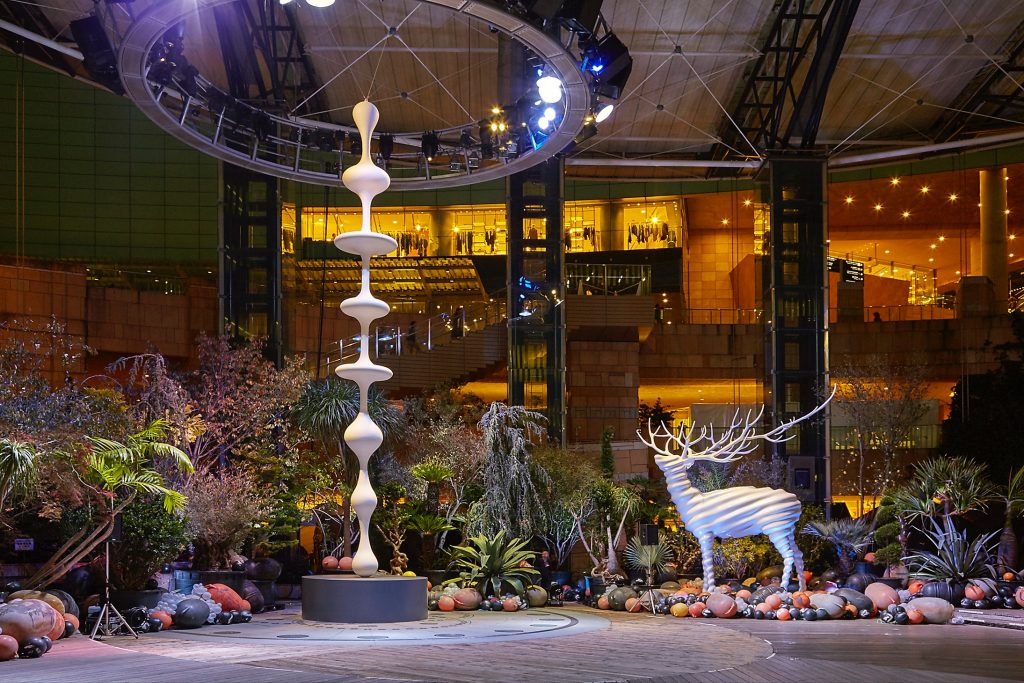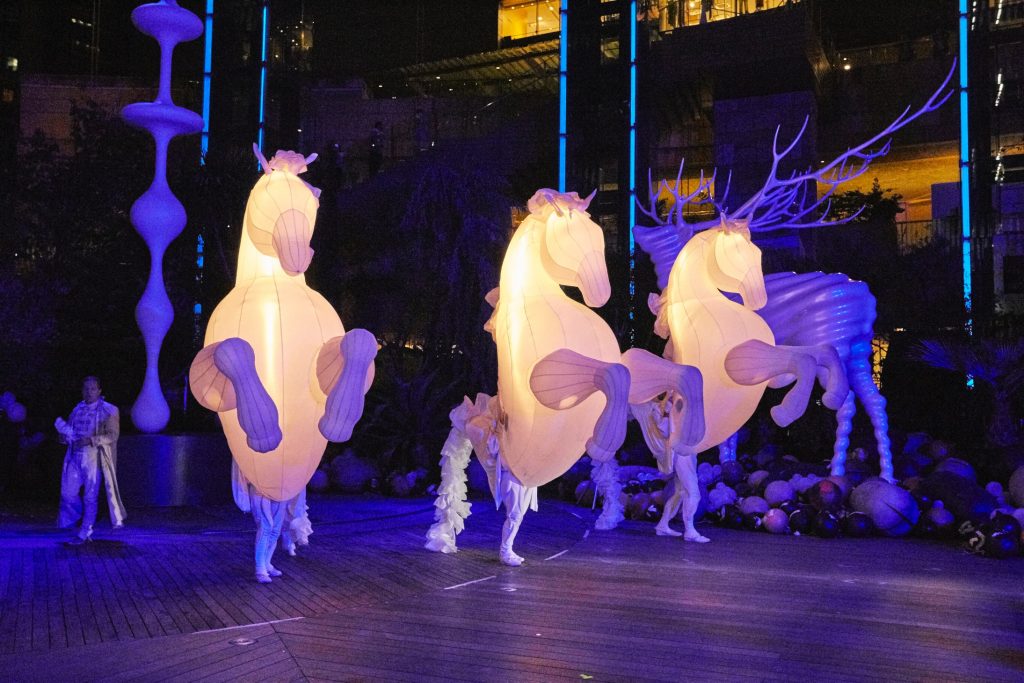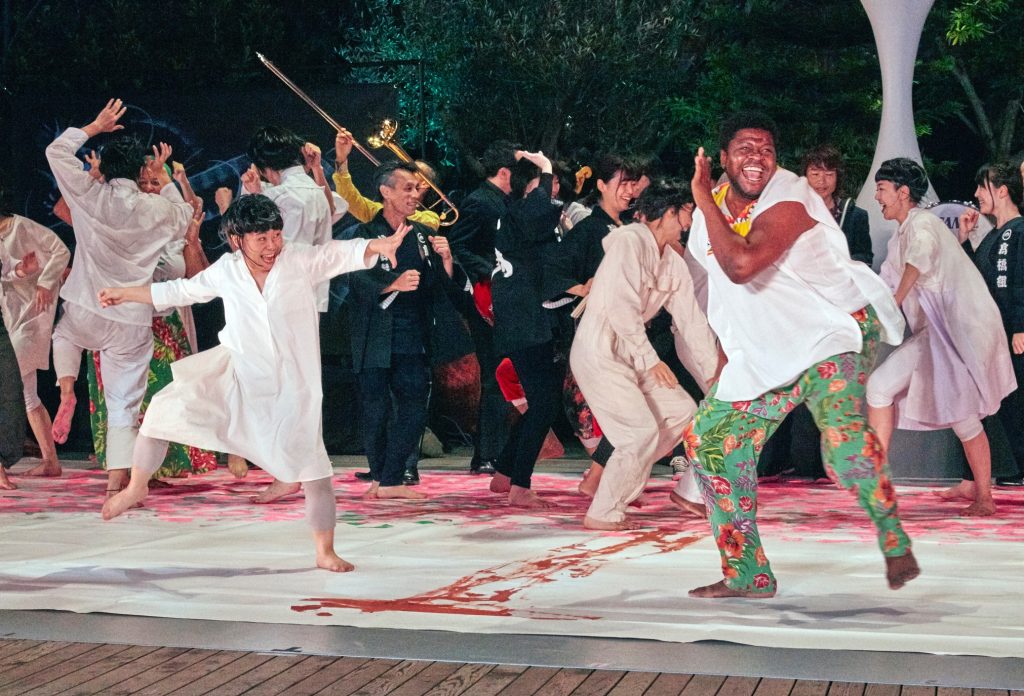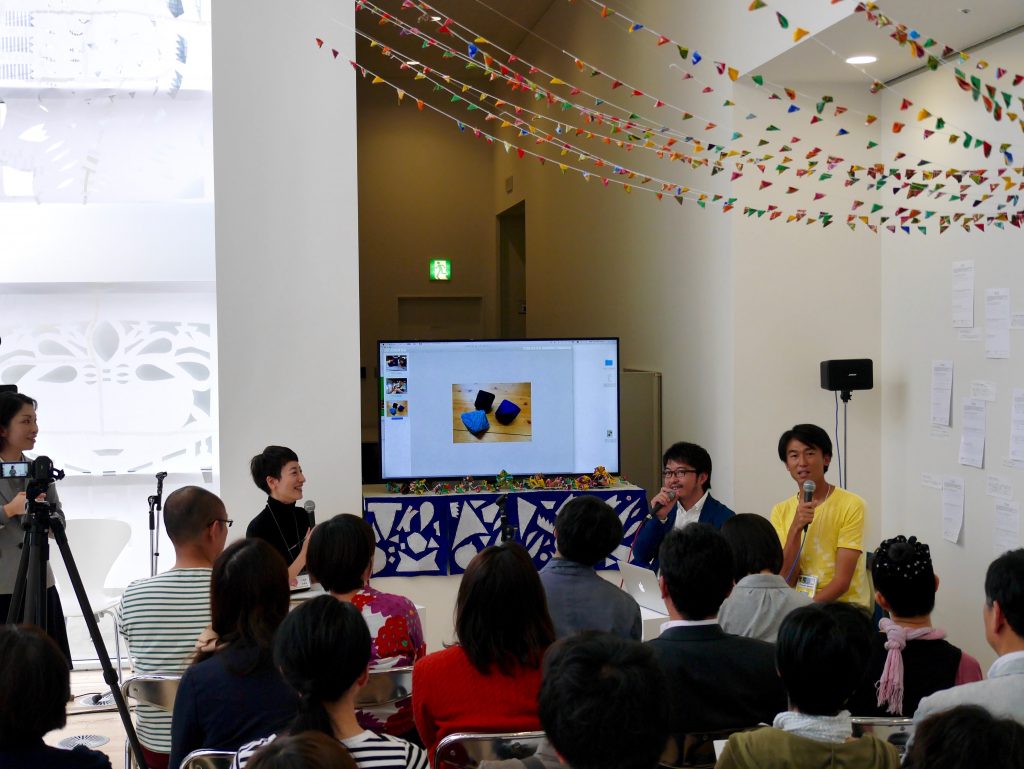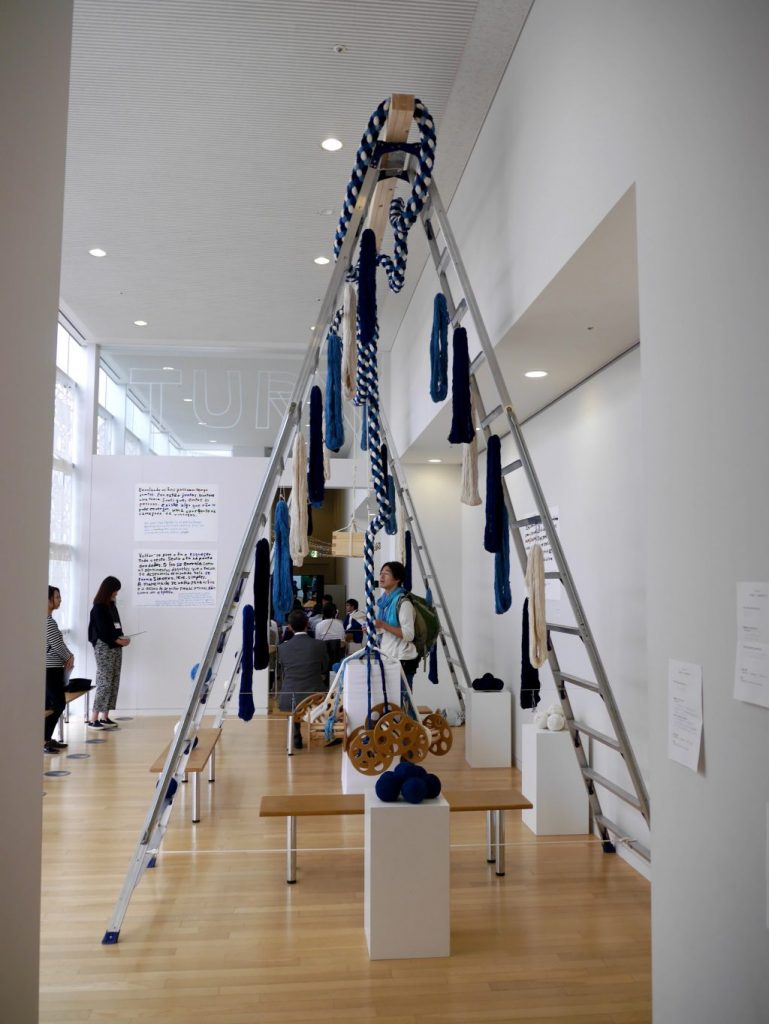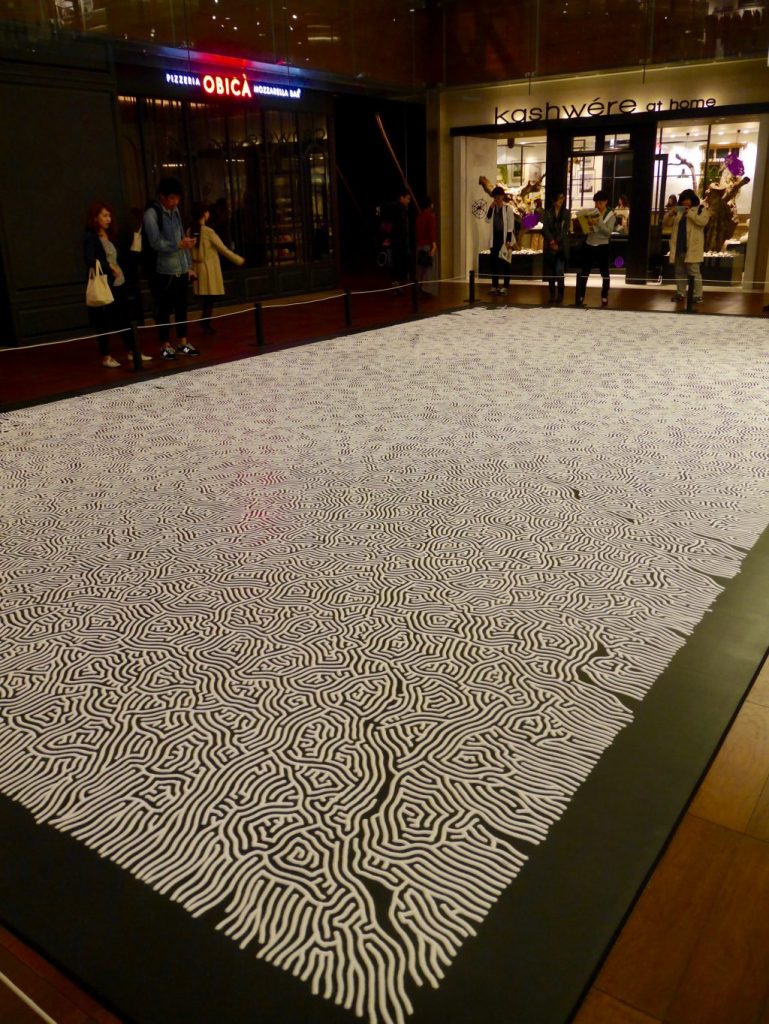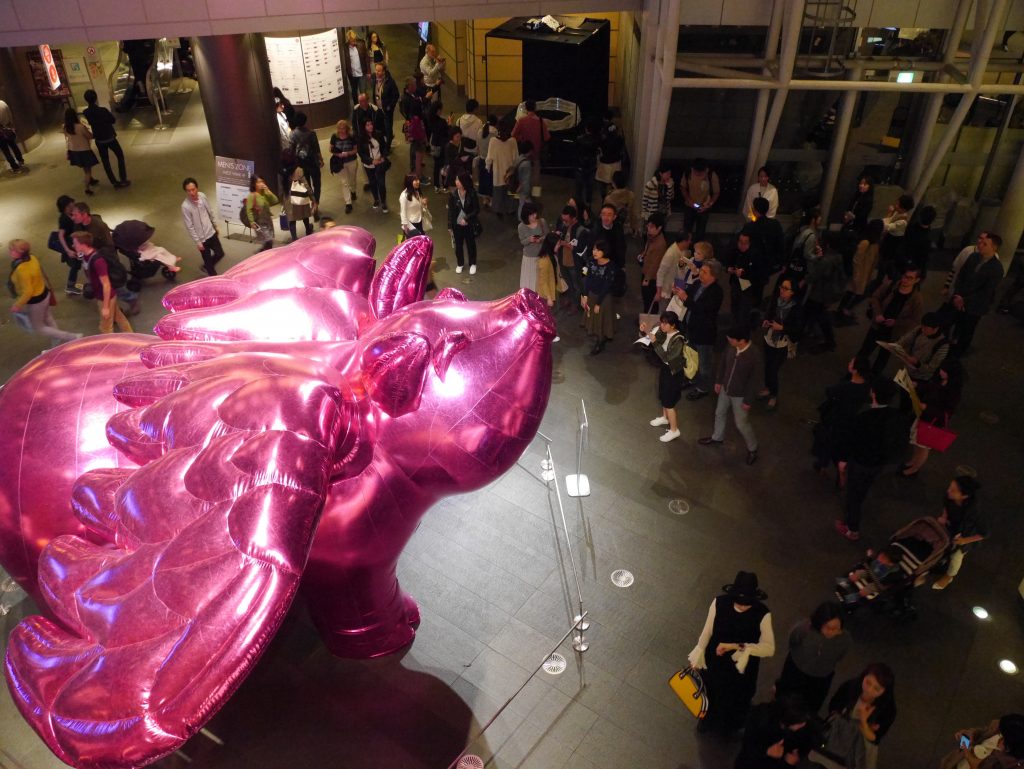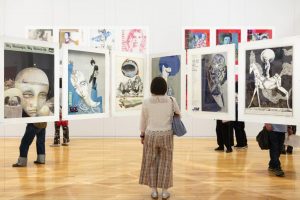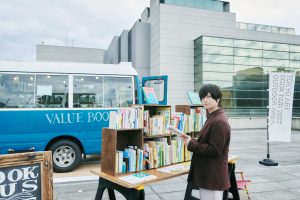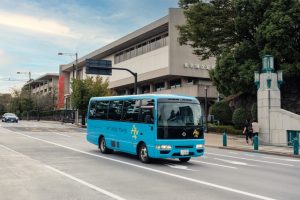Tokyo Caravan is a leading project guiding the cultural program for the Tokyo 2020 Olympic and Paralympic Games. Hideki Noda, a playwright, director and actor, devised this new movement. Starting out from Rio de Janeiro during the 2016 Summer Olympics, this movement pops up in various locations both in Japan and overseas to present a “Grand Cultural Circus.”
Among the participating artists for this Roppongi event were: Jongo musicians, dancers and Capoeira performers from Rio de Janeiro; Takahashi-gumi comprising Sendai Suzume odori dancers; the Tokyo Ska Paradise Orchestra; drag queens including Madam Regine; Noh player Reijiro Tsurumura, a living national treasure; and Kanatsu-ryu Shishi-Odori (Kanatsu style deer dance).
“In the digital media era, I want children of the future to embrace the interests of those who are breathing right in front of their eyes,” Noda said.
“First Steps toward Art, Design and Disability” was a three-day exhibition of artwork created by people with disabilities in cooperation with industry and designers. There were artificial legs for athletes, wheelchairs and design drawings.
Reporting sessions of TURN, its collateral program in Brazil, were held six times in three days. TURN is a project supervised by Katsuhiko Hibino, an artist, and was started in 2015.
In the summer of 2016, four artists were involved in this project in Rio de Janeiro, Brazil, where the Olympic and Paralympic Games were held. While staying in Sao Paolo, the artists held workshops in welfare facilities and created works.
Kenji Takano, director of La Mano, talked with Yasuaki Igarashi on October 22, in an event titled “Autista and Artista: Meet with strings at PIPA autistic children’s education facility.”
(“Autista” is Portuguese word meaning autism, and “artista” artists.)
La Mano is a craft studio in Machida where people with disabilities work. “Mano” means hand in Spanish. Igarashi works here, and he presented installation works at “TURN Fes.” His works were indigo dyed strings with his image of jumping into the ocean.
“At first, I mimicked behavior by just creating something. Later, they opened their mind to me. My experience at La Mano became my passport to PIPA,” said Igarashi.
PIPA in Brazil conducts life therapy. Igarashi commuted to the facility at 8 a.m. every morning and then went on runs with the children there. Once Igarashi started winding strings, he found there were children who were good at winding, others who liked picking the string and discovered by themselves what they liked.
Blue is the official color of World Autism Awareness Day (April 2). Indigo dyed works at La Mano match that symbolic color.
“At La Mano, everyone is working in his or her specialty. They are then confident with their work,” said Takano.
The talk session was concluded with the comment, “We will put value on each person’s personality, relationships and diversity that can only be born with that person, rather than focusing on the aspect of the ’Art Brut’.”
Next “TURN Fes” will be held in March 2017.
“Exchange Diary” is a collaboration work by Aya Momose and Korean artist Im Heungsoon. Each artist shot a short video of a place they visited and then added their own narration based on their impressions of the visual images. That may have something in common as the other side of self.
Motoi Yamamoto draws his work entitled “Labyrinth” with salt to meet the soul of his late younger sister. Viewers pray over the work.
“Love Me” by Choi Jeong-Hwa and “Pigpen” by Saeborg contain a bit cynicism, while “Man of the Wheel” by Kurumi Wakaki stood out in the viewer’s mind.
Roppongi Art Night 2016 may have suggested seeking contact points with others.
Supervised by Katsuhiko Hibino, an artist, TURN is an art project that brings together people of different backgrounds and customs.
TURN Fes was held at the Tokyo Metropolitan Art Museum on March 4-6, 2016, while “TURN in Brazil” presented artworks.
http://turn-project.com/en


